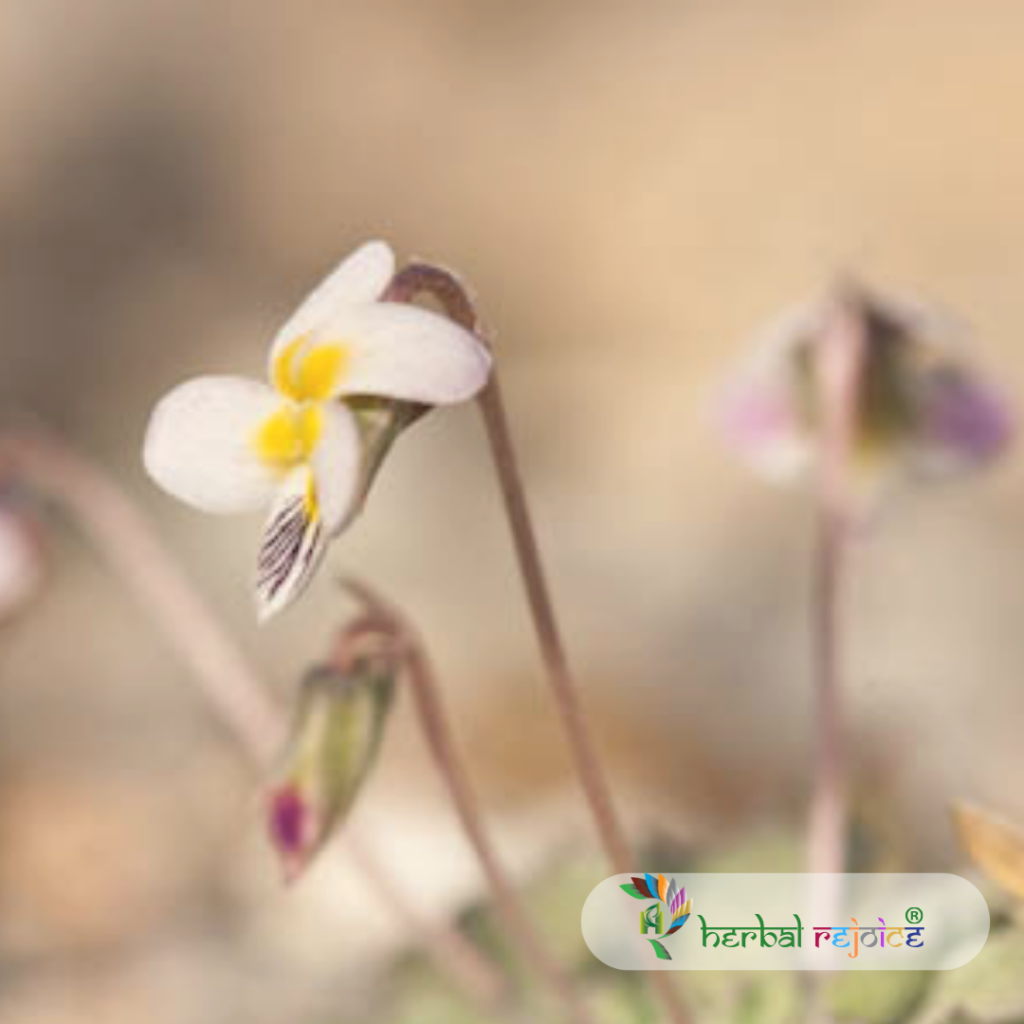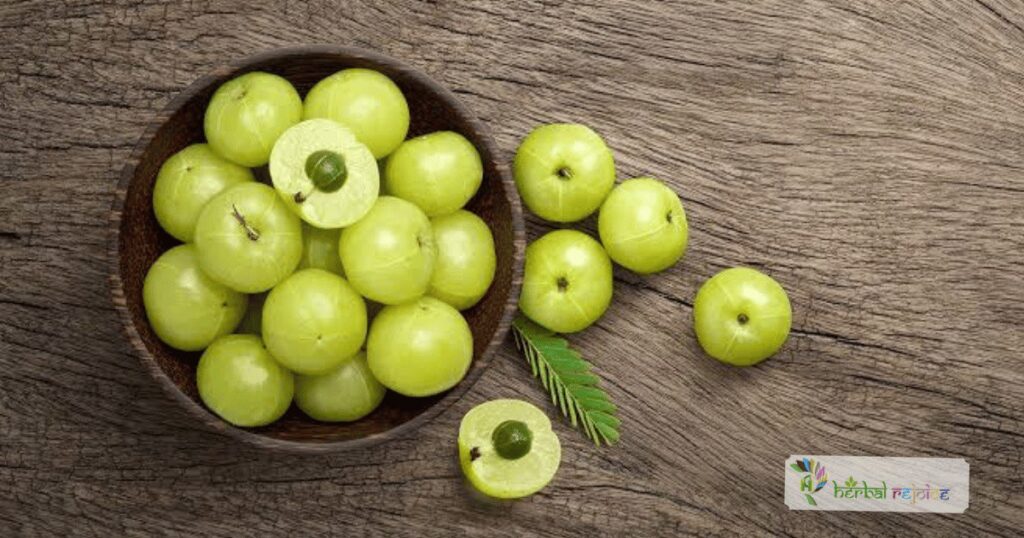Introduction
Viola cinerea Boiss. var. stocksii (Boiss.) W. Beck, also known as V. stocksii Boiss., belongs to the Violaceae family. This plant is primarily found in Punjab, Western Rajasthan, and Gujarat.
Traditional Medicine
In traditional Unani medicine, it is referred to as Banafashaa, while in local folklore, it is known as Jinkobanafashaa in Gujarat. The root of this plant is widely recognized for its medicinal properties, particularly as an emetic. Interestingly, the root is sometimes used as a substitute and adulterant of ipecac.
Viola cinerea Boiss. var. stocksii is commonly available in the market under the name Banafashaa. Its popularity in traditional medicine systems can be attributed to its various medicinal benefits. However, it is essential to ensure the correct identification and sourcing of this plant to harness its therapeutic potential effectively.

This plant has gained attention in recent years due to its potential use in the treatment of various health conditions. Its rich chemical composition offers a range of pharmacological activities. Scientific studies have revealed the presence of bioactive compounds such as alkaloids, flavonoids, terpenoids, and phenolic compounds in Viola cinerea Boiss. var. stocksii.
Several research studies have showcased the diverse pharmacological properties of this plant. Some of the important therapeutic activities demonstrated by Viola cinerea Boiss. var. stocksii include antioxidant, anti-inflammatory, antimicrobial, analgesic, anti-diabetic, and anti-cancer effects. These properties make it a promising candidate for the development of novel drugs or as an ingredient in traditional formulations.
Antioxidant activity
The antioxidant activity of Viola cinerea Boiss. var. stocksii is attributed to the presence of flavonoids and phenolic compounds. These compounds help in scavenging free radicals and reducing oxidative stress, thereby protecting the body from cellular damage. The anti-inflammatory properties of this plant can potentially contribute to the management of inflammatory disorders.
Antimicrobial activity
The antimicrobial activity of Viola cinerea Boiss. var. stocksii has been tested against various bacteria and fungi, exhibiting significant inhibitory effects. This suggests its potential use as a natural alternative for combating microbial infections.
Moreover, studies have indicated the analgesic properties of this plant, making it an effective remedy for pain relief. Its anti-diabetic effects have also been documented, potentially aiding in the management of diabetes.
Anticancer Effect
Interestingly, Viola cinerea Boiss. var. stocksii has also shown promising anti-cancer effects. Several studies have reported its ability to inhibit the growth of cancer cells and induce apoptosis (cell death) in various types of cancer, including breast, lung, colon, and prostate cancer.
While the traditional uses of Banafashaa have been recognized for centuries, scientific research has shed light on its medicinal properties and potential applications. However, it is essential to conduct further research to validate its therapeutic benefits and develop standardized formulations for clinical use.
Conclusion
In conclusion, Viola cinerea Boiss. var. stocksii (Banafashaa) is a valuable plant in the Violaceae family. Its pharmacological properties, including antioxidant, anti-inflammatory, antimicrobial, analgesic, anti-diabetic, and anti-cancer effects, make it a promising candidate for medicinal use. However, more research is needed to fully understand its potential and ensure safe and effective utilization in modern healthcare.
Frequently Asked Questions
What is Viola cinerea Boiss. var. stocksii?
Viola cinerea Boiss. var. stocksii, also known as Banafashaa, is a medicinal plant from the Violaceae family found primarily in Punjab, Western Rajasthan, and Gujarat.
What are the traditional uses of Banafashaa?
In traditional medicine, Banafashaa is used for its emetic properties and is commonly employed as a natural remedy for various health conditions, including respiratory issues and skin ailments.
What are the key chemical constituents of Viola cinerea?
The plant contains bioactive compounds such as alkaloids, flavonoids, terpenoids, and phenolic compounds, which contribute to its medicinal properties.
What pharmacological activities are associated with Banafashaa?
Banafashaa exhibits antioxidant, anti-inflammatory, antimicrobial, analgesic, anti-diabetic, and anti-cancer effects.
How does Banafashaa demonstrate antioxidant activity?
The antioxidant activity is attributed to the flavonoids and phenolic compounds, which scavenge free radicals and reduce oxidative stress.
Is Banafashaa effective against infections?
Yes, studies have shown that Viola cinerea var. stocksii has significant antimicrobial activity against various bacteria and fungi.
Can Banafashaa be used for pain relief?
Yes, the plant has analgesic properties and can be used as a natural remedy for pain relief.
Does Banafashaa have any effects on diabetes?
Preliminary studies indicate that Banafashaa may have anti-diabetic effects, potentially aiding in blood sugar management.
What evidence exists for the anti-cancer effects of Banafashaa?
Research has reported that Viola cinerea var. stocksii can inhibit cancer cell growth and induce apoptosis in various cancer types, including breast and prostate cancer.
Is Banafashaa safe for consumption?
While traditionally used, it is essential to ensure proper identification and sourcing of the plant to harness its therapeutic potential safely.
What form can Banafashaa be consumed in?
Banafashaa can be consumed in various forms, including as a decoction, extract, or powder, depending on the intended use.
Are there any side effects associated with Banafashaa?
As with any herbal remedy, potential side effects may exist, and it’s advisable to consult with a healthcare professional before use.
How should Banafashaa be stored?
Banafashaa should be stored in a cool, dry place away from direct sunlight to maintain its potency.
Can Banafashaa be used alongside conventional medicine?
It’s essential to consult a healthcare provider before using Banafashaa alongside conventional medicine to avoid potential interactions.
Is there ongoing research on Banafashaa?
Yes, ongoing research aims to validate its traditional uses and explore its potential applications in modern medicine.
How does the environmental condition affect the growth of Banafashaa?
Banafashaa thrives in specific environmental conditions, particularly in regions with suitable altitude and climate, which may influence its growth and medicinal quality.
Where can Banafashaa be sourced?
Banafashaa can be sourced from herbal shops or collected from the wild, but proper identification is crucial to ensure safety.
What role does Banafashaa play in local economies?
The cultivation of Banafashaa can provide economic benefits for local communities, promoting sustainable farming practices and biodiversity conservation.
Can Banafashaa be cultivated at home?
With the right conditions, Banafashaa can potentially be cultivated at home, but it’s essential to research its growing requirements thoroughly.
What are the cultural significances of Banafashaa?
Banafashaa holds cultural significance in various regions, often used in traditional practices and folklore.


